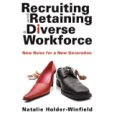 As an addendum to the post I wrote about the new Catalyst study earlier this week just came in from GWP’s resident sociologist, Virginia Rutter:
As an addendum to the post I wrote about the new Catalyst study earlier this week just came in from GWP’s resident sociologist, Virginia Rutter:
Related research: In “Working for the Woman? Female Managers and the Gender Wage Gap” (October 07 issue of the American Sociological Review), Philip Cohen and Matt Huffman demonstrate that the greater representation of women in management jobs narrows the wage gap among non-management workers. When ladies are boss, all the ladies do better. But for it to really make a difference, women need to be in the higher levels of management. In fact, the authors reference the “title inflation” phenomenon: they saw evidence of a concentration of women in lower management–and that concentration doesn’t give the workers much relief in terms of the gender wage gap. Reason I like this story–and the one on board membership here–is that it gives us concrete evidence for the glass ceiling, and why breaking through matters.
And btw, for Philip Cohen’s latest, check out his post last month at HuffPo (“Women May Be Losing Jobs Too, But They’re Different Jobs”) in response to the NYTimes piece on how hard economic times are affecting women’s employment rates. -GWP









